The Story Behind the Song - "Our House"

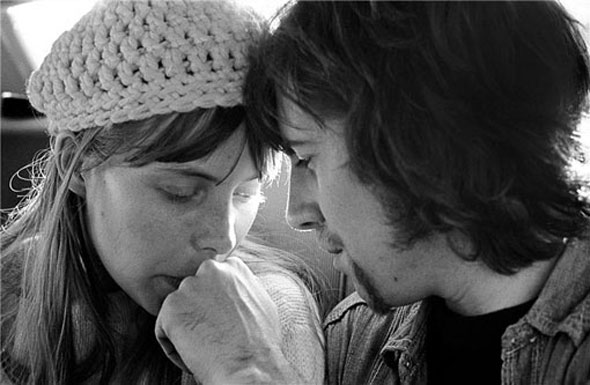 Just as most of were embarking on life as full-fledged adults, Graham Nash of Crosby, Stills, Nash & Young penned this Hallmark card of song, encapsulating the life of tranquil bliss we all imagined ourselves living once we settled down with our "one true love."
Just as most of were embarking on life as full-fledged adults, Graham Nash of Crosby, Stills, Nash & Young penned this Hallmark card of song, encapsulating the life of tranquil bliss we all imagined ourselves living once we settled down with our "one true love."
"Our House" was featured on Dejé Vu, the album that saw Neil Young formally join what had been the superstar trio of David Crosby, Steven Stills and Graham Nash. It was written by Nash about his relationship with singer/songwriter Joni Mitchell. The two were living together in L.A. The couple had stepped out for breakfast. After the meal, Mitchell spotted a vase she liked on Ventura Boulevard. When they arrived back at home,the weather had turned chilly. Nash remarked, "Why do I light the fire and you put some flowers in the vase you just bought."
Struck by his own words, he went over to the piano and an hour later, "Our House" had been composed.
As few, if any of us, ever achieved the idyllic existence promised in the lyrics of the song, it may be comforting to know that Nash and Mitchell didn't either. The couple split up before the year was out.
Now Playing: "Three Coins in the Fountain" (1954)
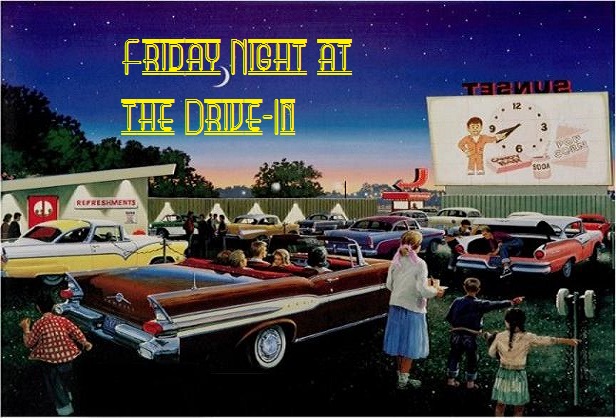 Three Coins in the Fountain is solid proof of how easily entertained we were in the 1950’s. This piece of cinematic junk food was actually nominated for the Best Picture Oscar in the year of its release. Sadly, watching it today, one can’t help but notice that the background scenery is the most interesting part of the movie!
Three Coins in the Fountain is solid proof of how easily entertained we were in the 1950’s. This piece of cinematic junk food was actually nominated for the Best Picture Oscar in the year of its release. Sadly, watching it today, one can’t help but notice that the background scenery is the most interesting part of the movie!
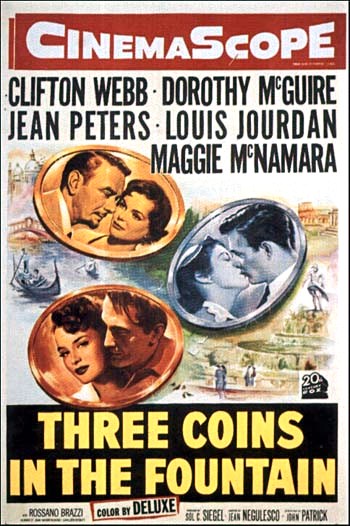
Made when Cinemascope was the newest gimmick studios were employing to lure people away from their newly beloved TV sets, Three Coins involves the extremely thin story of three American working girls searching for husbands in Rome, with a brief side trip to Venice.
Jean Peters, Maggie McNamara and Dorothy McGuire play the ladies in question – designed to represent young, very young and dangerously approaching middle age. They all work as secretaries – Peters and McNamara for a make-believe U.S. Government agency, “The United States Distribution Agency,” and McGuire for expatriate American author Clifton Webb (playing a far less venomous version of his character from Laura).
The girls live in an impossibly huge, luxuriously furnished apartment and Peters and McGuire also seem to own extensive designer wardrobes, indicating secretaries must have earned fantastic salaries in those times.
 The scenery is fantastic, but one begins to notice that this is an Italy devoid of Italians. Only Peters' love interest, Rossano Brazzi, and his family in the country are authentically Italian. McNamara’s love interest is an Italian prince, played by Louis Jordan. The other cast members courteously refrain from asking the prince why he has an English mother (Cathleen Nesbitt) and speaks with a French accent. Whenever these characters visit famous landmarks, there are no tourists or locals to be seen anywhere.
The scenery is fantastic, but one begins to notice that this is an Italy devoid of Italians. Only Peters' love interest, Rossano Brazzi, and his family in the country are authentically Italian. McNamara’s love interest is an Italian prince, played by Louis Jordan. The other cast members courteously refrain from asking the prince why he has an English mother (Cathleen Nesbitt) and speaks with a French accent. Whenever these characters visit famous landmarks, there are no tourists or locals to be seen anywhere.
The film is billed as a romantic comedy. It’s very long on romance and very short on comedy. The title is also something of a cheat as only two of the American girls actually toss a coin into the legendary Trevi Fountain.
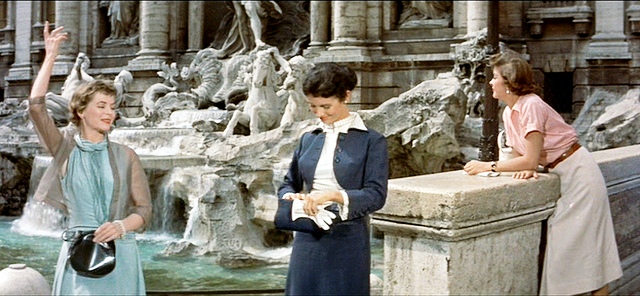
Curiously, the film does not open with credits. It opens with an uncredited Frank Sinatra singing the now-classic title tune (which did win the Best Song Oscar) to a montage of breath-taking footage of fountains all around Rome. When the song finishes, there is a brief dip to black and then we fade up on the film’s opening titles. Apparently, movie audiences had a lot more patience back in 1954.
Still, it does make for the most interesting travelogue on Rome ever filmed.
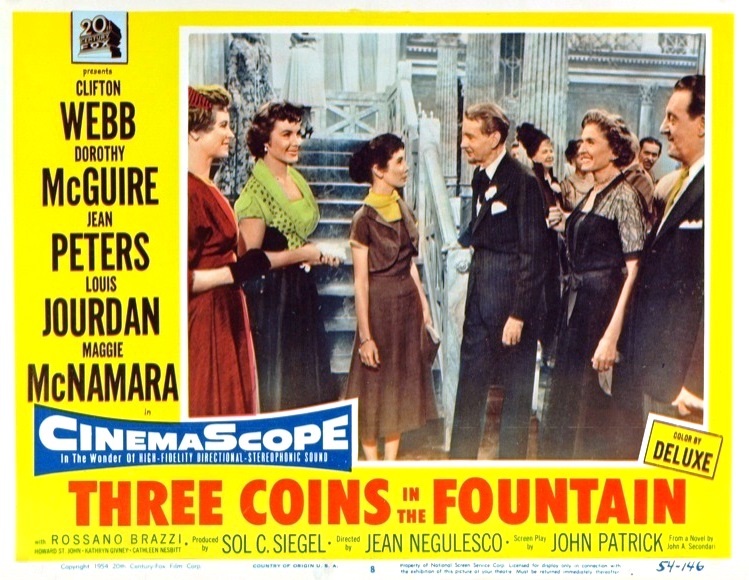
Beware: The “Pop-Up Window of Death”
 You know the situation. You’re calmly surfing the web on your PC or laptop when all of a sudden a big pop-up window appears and a loud voice comes over your speakers warning you that your computer is dangerously infected with a virus or malware. There is just one problem…
You know the situation. You’re calmly surfing the web on your PC or laptop when all of a sudden a big pop-up window appears and a loud voice comes over your speakers warning you that your computer is dangerously infected with a virus or malware. There is just one problem…
Real anti-virus/anti-malware programs do not operate like this. They do not take over your computer with loud voices or screens you cannot close.
Your computer IS in danger – but from the source of the pop-up.
If you get one of these pop-up warnings, here are some steps to remember:
1.) Do NOT click anywhere on the pop-up window
2.) Do NOT take any action the pop-up window is urging you to take (like call a toll-free number)
3.) If possible, immediately closer your web browser.
4.) If that’s not possible, reboot your computer immediately
5.) If all that fails, get your computer to an authorized repair center as soon as possible.
S.O.S. - Save Our Senses
 As we age, most people know that our sight and our hearing deteriorate. What most don’t know is that our other 3 senses (smell, taste and touch) can also diminish.
As we age, most people know that our sight and our hearing deteriorate. What most don’t know is that our other 3 senses (smell, taste and touch) can also diminish.
Here’s some practical tips for keeping your senses sharp.
Sight: Exercise (helps blood flow to your eyes) and a good amount of sleep
Hearing: Wear ear plugs around loud noises (lawnmower, power tools, etc.), watch your weight (lower blood pressure helps keep the cells in your ears healthy)
Smell: Exercise, avoid strong aromas and even spending time smell familiar aromas can help maintain your sense of smell
Taste: Maintain good dietary health (blood sugar, etc.) and experience more complex and intense flavors when eating
Touch: Exercise and practice touching and being touched (hugs, pet the dog or cat, schedule a massage, etc.)
Comics Confidential: Fritzi Ritz Puts the Strip in Comic Strip
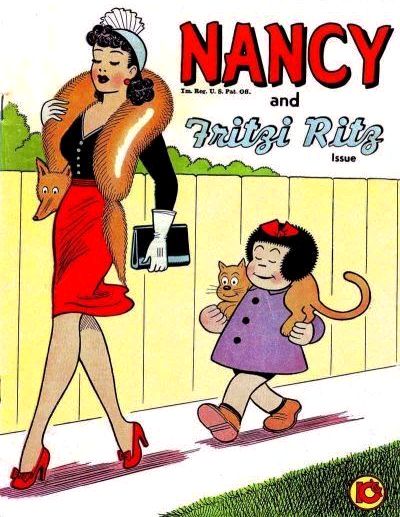 We all grew up thinking of Fritzi Ritz as Nancy’s sensible, respectable guardian, but she had a secret past!
We all grew up thinking of Fritzi Ritz as Nancy’s sensible, respectable guardian, but she had a secret past!
Francine “Fritzi” Ritz started out as a showgirl who not only took off her clothes to entertain newspaper readers, she also was something of a public exhibitionist as these long lost newspaper clippings prove.
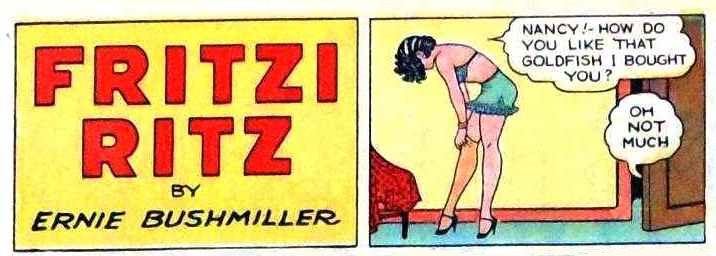
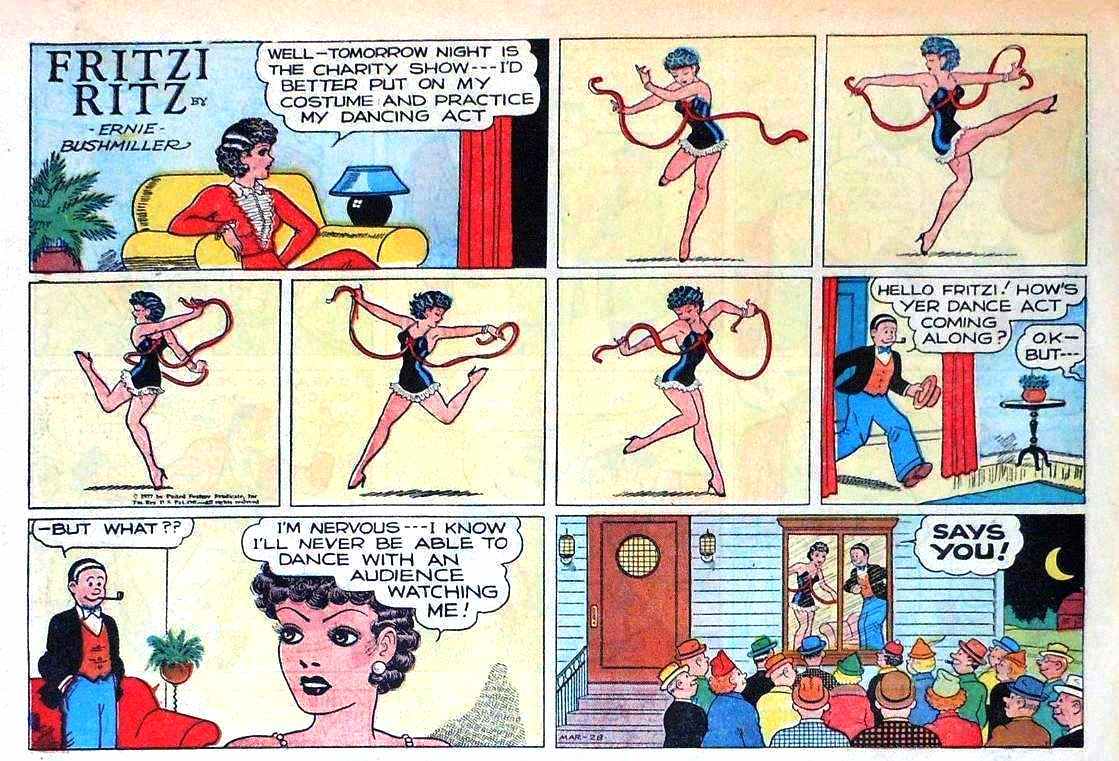
Contacted at the Home for Retired Comic Strip Actors, Ms. Ritz explained: “I’m not proud of what I did, but I’m not ashamed either. I needed the money.”
8 Things You Didn't Know About "Hogan's Heroes"
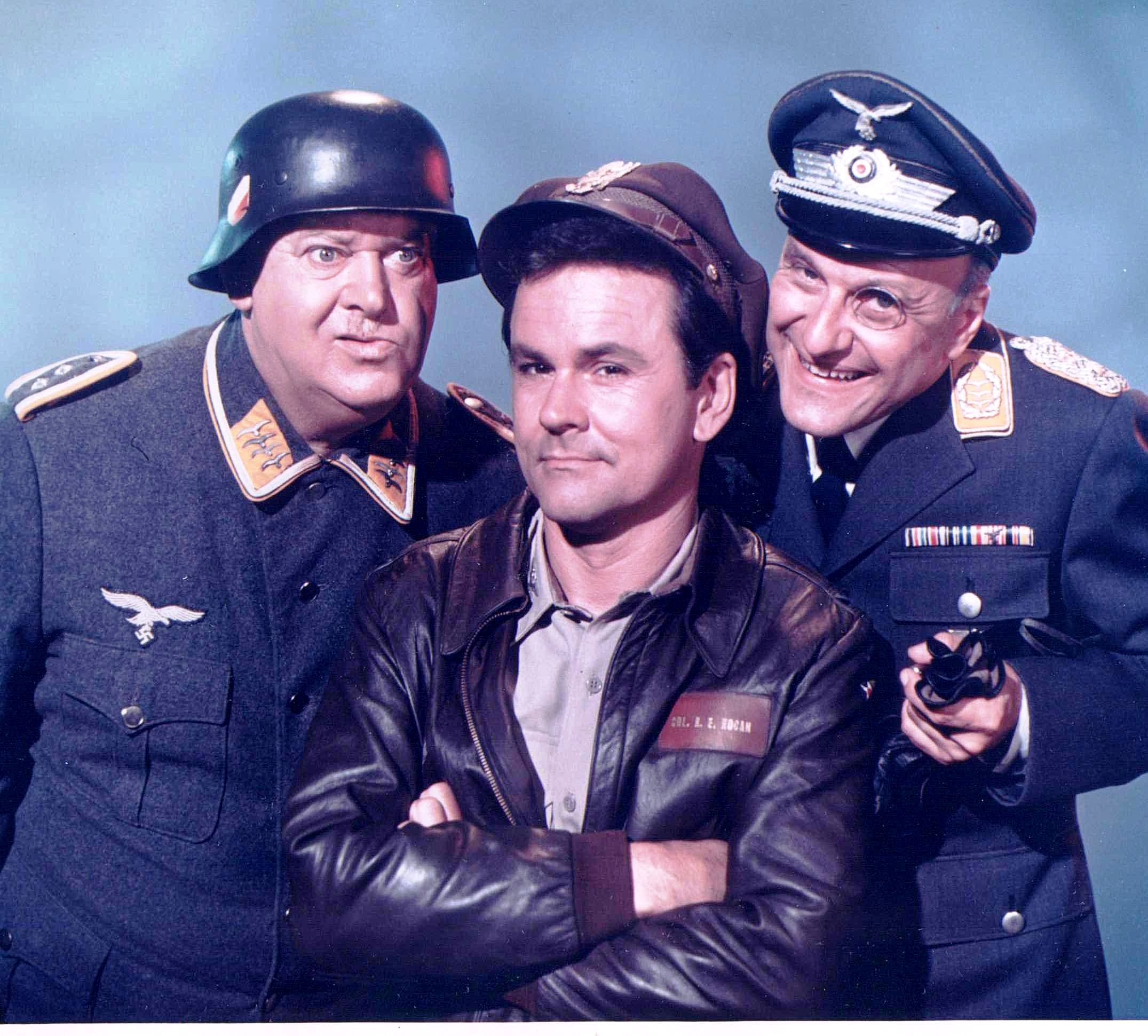 All of us who grew up in the 60’s watched Hogan’s Heroes, the show that demonstrated just how hilarious life could be in a Nazi POW camp. The show ran for 6 seasons on CBS and then for decades more in syndication (even reaching German viewers in the early 90s’).
All of us who grew up in the 60’s watched Hogan’s Heroes, the show that demonstrated just how hilarious life could be in a Nazi POW camp. The show ran for 6 seasons on CBS and then for decades more in syndication (even reaching German viewers in the early 90s’).
Here are a few things about the show that you may not know:
1. The Show Was Supposed to Be Set in an American Prison
Show creator Albert Ruddy changed his original script when he heard NBC was planning a sit-com based in an Italian POW camp. Ruddy thought he would one-up NBC by putting his prisoners in a German camp.
2. All of the Main German Characters Were Portrayed by Jewish Actors
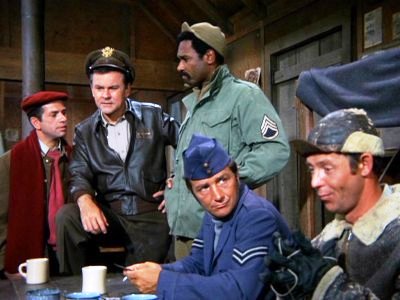 The actors who portrayed Klink, Schultz, Burkhalter and Hochstetter were all Jewish and three of the four had actually fled Germany to escape Hitler.
The actors who portrayed Klink, Schultz, Burkhalter and Hochstetter were all Jewish and three of the four had actually fled Germany to escape Hitler.
3. Richard Dawson Wanted His Character to Be from Liverpool
Show producers thought that accent would be too difficult for American audiences to understand. The Beatles proved the producers wrong.
4. General Burkhalter Received a Promotion After the Pilot Was Filmed
Leon Askin played a Colonel Burkhalter in the series’ pilot. Someone must have noticed that he didn’t really outrank Colonel Klink. So by the next episode, he had been promoted to General. However, Askin did not play the character in that particular episode. He returned to the role a little later.
5. Carter Actually Escaped from Stalag 13 in the Very First Episode
Larry Hovis (Carter) was not set to be a series regular. He appeared in the pilot episode as an American soldier Hogan’s team was smuggling out of Germany. Producers must have liked him because when the series went into regular production, Hovis was back at Stalag 13 playing the same character, but no explanation for why he was back at the camp was ever given.
6. The Set Was Destroyed During the Making of Ilsa, She Wolf of the SS
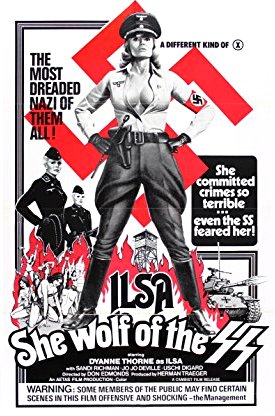 After Hogan’s Heroes wrapped production, the standing set was used by producers of the notoriously trashy film Ilsa, She Wolf of the SS. At the end of that film, the camp is destroyed during warfare.
After Hogan’s Heroes wrapped production, the standing set was used by producers of the notoriously trashy film Ilsa, She Wolf of the SS. At the end of that film, the camp is destroyed during warfare.
7. 4 of the Cast Members Recorded an Album of WWII Songs
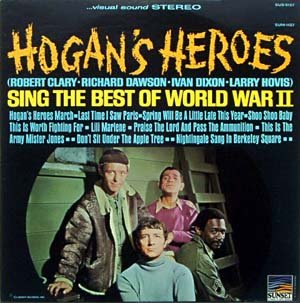 Richard Dawson, Robert Clary, Larry Hovis and Ivan Dixon actually formed a quartet and filled an album with songs from the WWII era plus a vocal version of the Hogan’s Heroes theme song!
Richard Dawson, Robert Clary, Larry Hovis and Ivan Dixon actually formed a quartet and filled an album with songs from the WWII era plus a vocal version of the Hogan’s Heroes theme song!
8. The Show Was Produced by Bing Crosby
Think about that the next time you watch White Christmas.
Whatever Happened to Burger Chef?
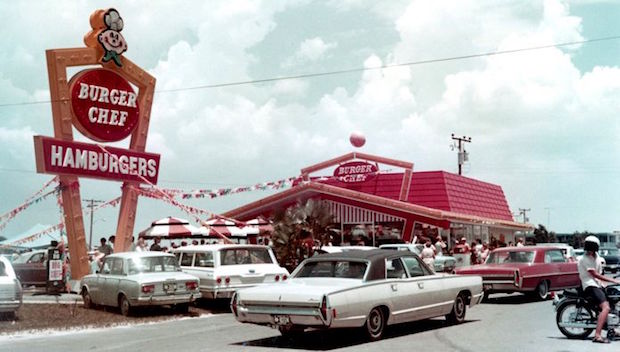 Ask anyone under 40 about a fast-food chain named Burger Chef and you’re likely to get a puzzled expression. Or maybe, if they’re a fan of the TV series Mad Men, they might recognize the name as an account Don Draper and Peggy Olsen were pitching in one of that series’ episodes.
Ask anyone under 40 about a fast-food chain named Burger Chef and you’re likely to get a puzzled expression. Or maybe, if they’re a fan of the TV series Mad Men, they might recognize the name as an account Don Draper and Peggy Olsen were pitching in one of that series’ episodes.
But Baby Boomers should remember Burger Chef as the chain that was challenging McDonald’s for fast-food supremacy in the 1960’s!
The chain started in 1954 in Indianapolis, IN. Two brothers, Dave and Frank Thomas were working on a flame broil system for Burger King (another franchise that had recently started). The brothers decided not to sell their flame broiler, instead opting to go into business for themselves.
Besides flame broiling, the chain also created a couple of other innovations:
- The “Value Combo” that included burger, fries and a drink for one, lower price
- The “Fun Meal” with a toy for kids (Yep, just as McDonald’s ripped off Big Boy when they “created” the Big Mac, the Happy Meal was a rip-off of Burger Chef’s kids meal.)
- The “Self-Serve Works Bar” where you could add your own toppings.
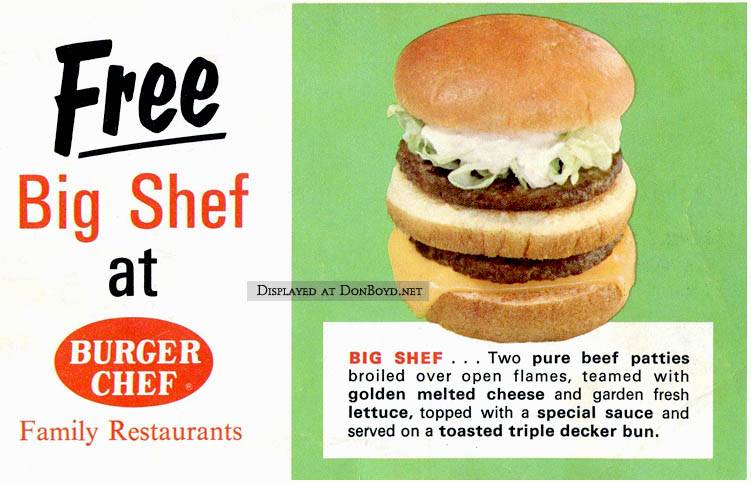 At their peak, Burger Chef had 2,400 locations across the country. So, what happened?
At their peak, Burger Chef had 2,400 locations across the country. So, what happened?
In 1971, the chain was sold to General Foods and that proved to be their undoing. While General Foods knew the grocery business, they didn’t really know the burger business.
General Foods actually charged their franchisees too little in royalties. That left them underfunded when it came to national advertising, marketing and developing new items for their menu.
McDonald's began adding things like salads, breakfast sandwiches and more to their menu. Burger King used their “Have It Your Way” advertising campaign to stress their ability to deliver a custom-ordered burger quickly. That helped establish them as the main alternative to Mickey D’s. So, Burger Chef moved from second to third place in most consumers’ minds.
Eventually, General Foods decided they’d had enough of the fast-food business and sold the chain to Hardee’s.
And that’s the way the burger flips!
Is There Gold in Your Attic?
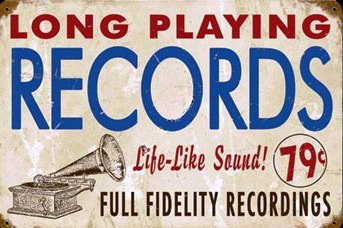 Everybody thinks they got some treasure stashed somewhere - in the attic, down in the baseball or in the closet where old photos and more are lurking. But the truth is all that's old is not necessarily gold. Don't let Antiques Roadshow put dollar signs in your eyes.
Everybody thinks they got some treasure stashed somewhere - in the attic, down in the baseball or in the closet where old photos and more are lurking. But the truth is all that's old is not necessarily gold. Don't let Antiques Roadshow put dollar signs in your eyes.
Here's what's hot and what's not in the world of collectibles:
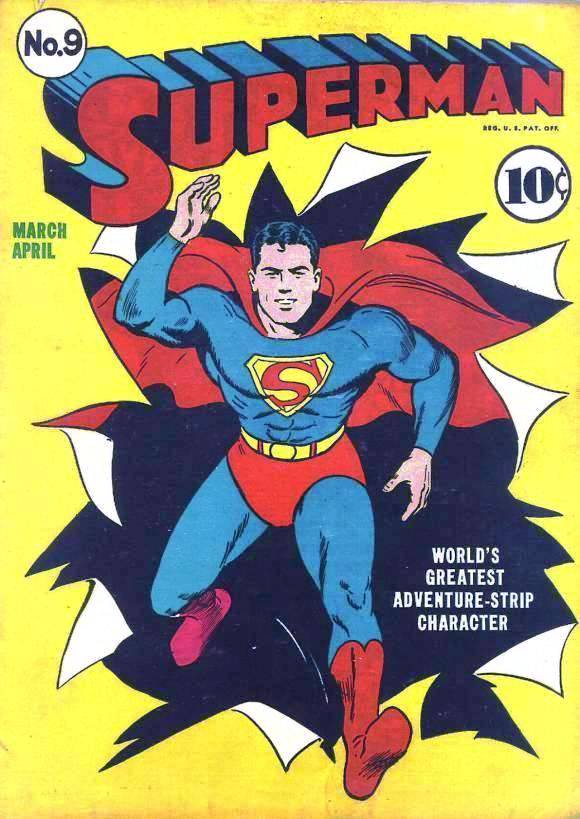 Comic Books: Everybody thinks that stash of beat up comics from the 1980's will pay for their retirement or their kid's college education. Sorry to disappoint, but most comics from the mid 1970's on are just not worth much at all. That's because people stopped throwing out comics and started saving them when fans of comic books got organized in the late 1960's. As a result, if you have early comics (from the 1930's thru the 1960's), those may be worth money. Anything after - not so much. And the condition of those books has a definite impact on their value.
Comic Books: Everybody thinks that stash of beat up comics from the 1980's will pay for their retirement or their kid's college education. Sorry to disappoint, but most comics from the mid 1970's on are just not worth much at all. That's because people stopped throwing out comics and started saving them when fans of comic books got organized in the late 1960's. As a result, if you have early comics (from the 1930's thru the 1960's), those may be worth money. Anything after - not so much. And the condition of those books has a definite impact on their value.
Movie Posters: Posters from before 1990 can have value, especially those featuring stars, subjects or genres that have their own fan bases. This would include Star Wars, the Beatles, Marilyn Monroe, James Bond, Wizard of Oz, etc. But be careful, many movie posters have been reproduced over the years. Reproductions do not fetch anywhere near the price of the originals!
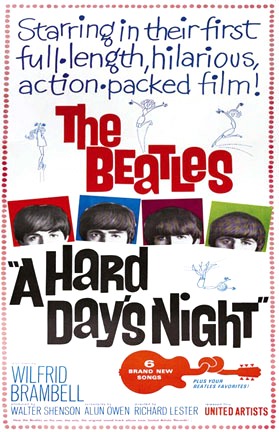 Bobbleheads: All the rage now, bobble head dolls were not quite as common a few deacdes back - and it's those older bobble heads that command the best prices.
Bobbleheads: All the rage now, bobble head dolls were not quite as common a few deacdes back - and it's those older bobble heads that command the best prices.
Baseball/Sports Cards: Like comic books, only the older ones have any real value. When the hobby took off in the 1980's, so many companies jumped in and so many collectors bought cases of them, that supply way outstrips demand. But the older ones can still fetch attractive prices, especially in top condition.
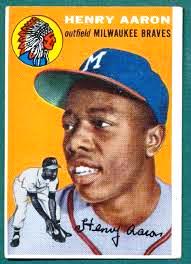 Advertising Signs: Believe it or not, metal advertising signs are generally less valuable than cardboard ones. That's because the metal signs are more durable meaning more of them survived. Like movie posters, this is an area where many older signs have been reproduced later. Be careful when buying or selling. The reproducions are obviously worth far less.
Advertising Signs: Believe it or not, metal advertising signs are generally less valuable than cardboard ones. That's because the metal signs are more durable meaning more of them survived. Like movie posters, this is an area where many older signs have been reproduced later. Be careful when buying or selling. The reproducions are obviously worth far less.
Space Program Memorabilia: This has become one of the hottest areas among collectibles. Items from the early space missions are in demand and prices are moving upwards! (To the moon?)
Toys: As with most collectiibles, the older, the better and the better condition, the higher the price. Toys that appeal to other subgroups (such as Disney toys for Disney collectors or those tied in with popular movies or TV shows) are in demand. Toys still in their original packaging (often referred to as "MIB" for "mint in box") command the highest prices. Alas, Beanie Babies are not hot. They were produced in the millions and every little girl and/or their mother saved them, thinking they would be worth a fortune.
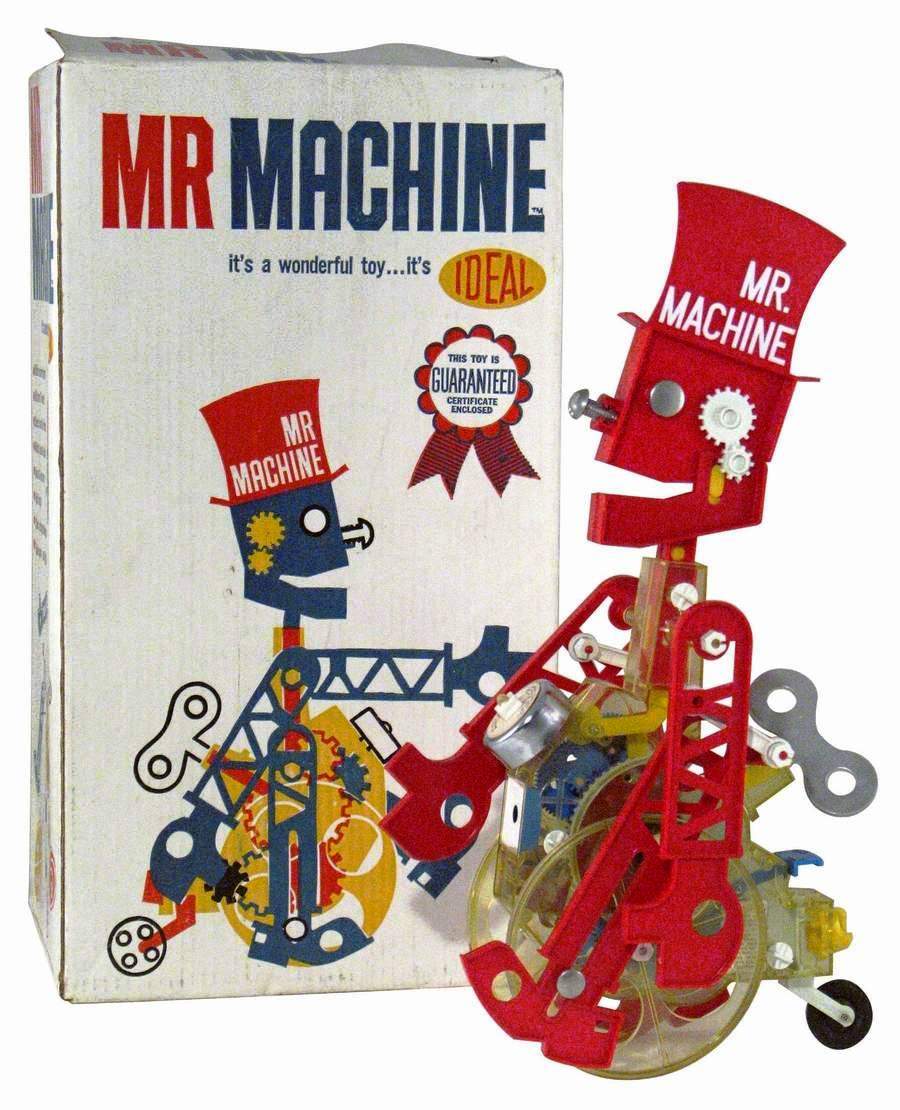
Of course, the old stand-bys such as coins, stamps, historical artifacts and genuine antiques all have their value. It's best t make sure you consult an expert you trust in a given field of collectibles before buying or selling.
Our Forgotten Cartoon-Americans: Fresh-Up Freddie
 We must never forget the contributions made to American pop culture by our animated brothers and sisters.
We must never forget the contributions made to American pop culture by our animated brothers and sisters.
Fresh-Up Freddie got his big show biz break in 1957 when he was selected as the spokesbird for 7-Up. Exactly what kind of bird was never made clear.
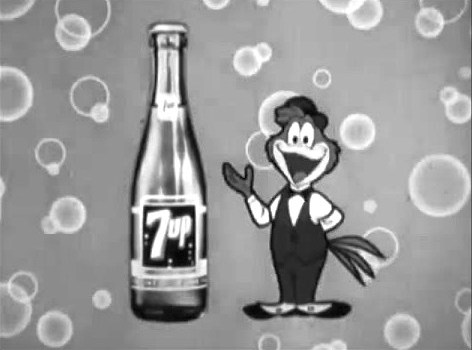 The campaign was hatched by the Leo Burnett advertising agency and the design of the character as well as the animation was done by the Walt Disney Studios. Freddie made his debut on Walt Disney’s Zorro TV series, which also debuted in 1957. His voice was provided by veteran voice artist Paul Frees (best remembered as the voice of Boris Badenov as well as the narrator for “The Haunted Mansion” at the Disney theme parks).
The campaign was hatched by the Leo Burnett advertising agency and the design of the character as well as the animation was done by the Walt Disney Studios. Freddie made his debut on Walt Disney’s Zorro TV series, which also debuted in 1957. His voice was provided by veteran voice artist Paul Frees (best remembered as the voice of Boris Badenov as well as the narrator for “The Haunted Mansion” at the Disney theme parks).
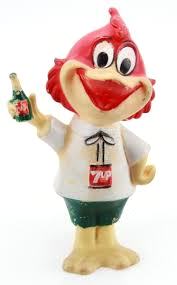 The formula for nearly all of Freddie’s commercials began with Freddie asking a hypothetical question that began, “Right now, you’re probably asking yourself…” Of course, the answer to every one of the questions somehow involved using 7-Up. The commercials all ended with Freddie singing a sort of nonsensical jingle that sure sounded like “Beet-en, Beet-en, Beet-en/Nothing does it like 7-Up!” (You can watch one here.)
The formula for nearly all of Freddie’s commercials began with Freddie asking a hypothetical question that began, “Right now, you’re probably asking yourself…” Of course, the answer to every one of the questions somehow involved using 7-Up. The commercials all ended with Freddie singing a sort of nonsensical jingle that sure sounded like “Beet-en, Beet-en, Beet-en/Nothing does it like 7-Up!” (You can watch one here.)
Alas, as we moved into the 1960’s, 7-Up morphed into “the Un-Cola” and Freddie’s contract was not renewed.
But there was a time when there were actually Fresh-Up Freddie toys, buttons and of course, lots of magazine ads!
Boomtown America is proud to salute this plucky animation icon!
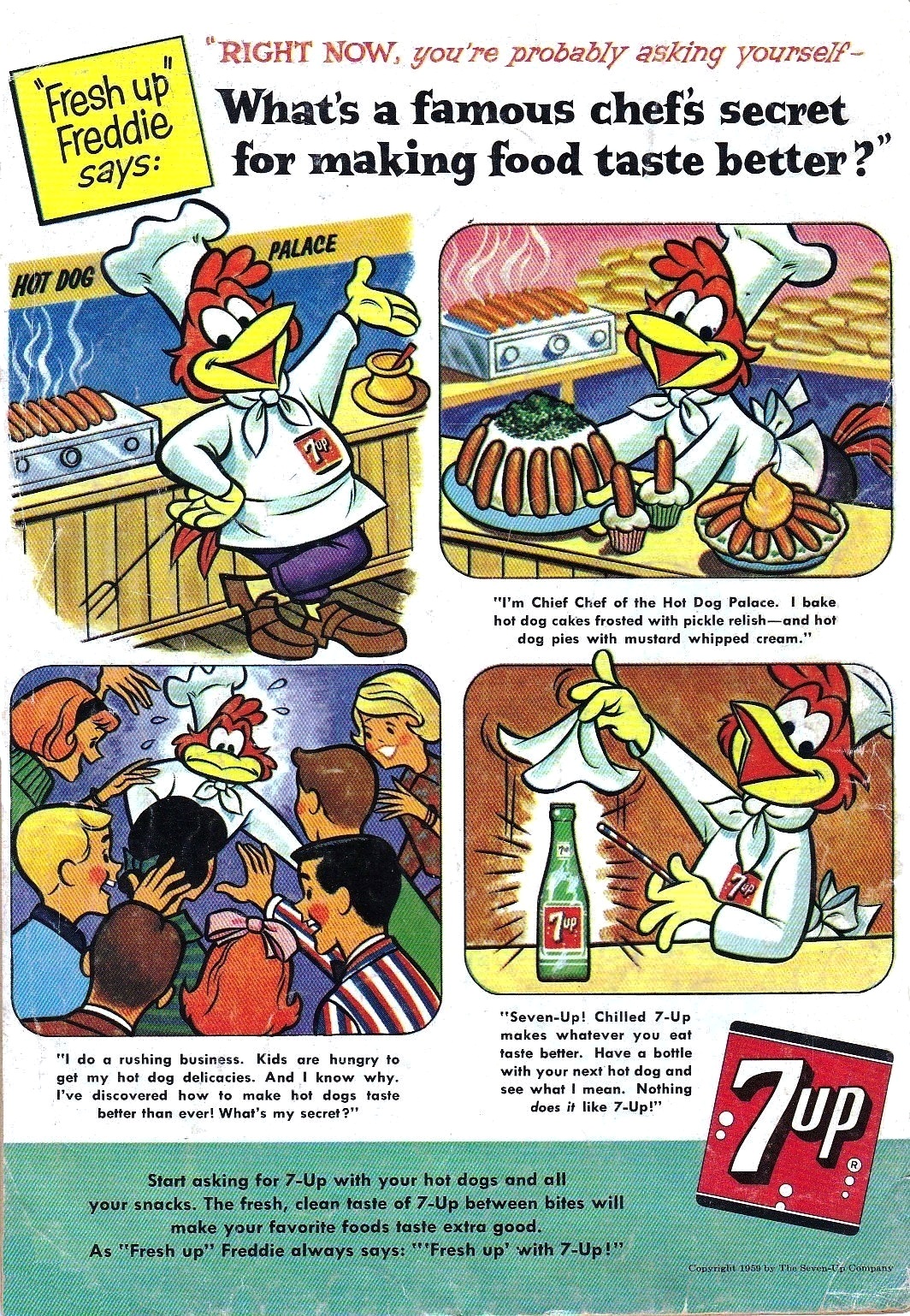
Baby Boom Needs a Shot in the Arm!
 Disease prevention experts say those of us over 65 may be facing a health care crisis we could easily avoid!
Disease prevention experts say those of us over 65 may be facing a health care crisis we could easily avoid!
Nearly 2/3 of American over 65 have not had the shingles vaccine and 40% of us haven't had a tetanus shot in the past decade. Add to that nearly 1/3 of Boomers have not been vaccinated for pneumonia.
If you fall into one of these categories, do yourself a favor and make an appointment with your doctor today!
Pop Up Player
Latest Posts–Movies & TV
-
The TV That Time Forgot: Annie Oakley
There was a time when Westerns dominated television programming so thoroughly that it was tough (with no home video, no streaming, and just 3 networks if you lived in a city big enough to have…
-
The TV That Time Forgot: My Living Doll (1964-65)
For a show that lasted only a single season, a surprising number of Baby Boomers remember the situation comedy My Living Doll. Perhaps that’s because once seen, Julie Newmar cannot easily be forgotten. The situation…
-
Alfred Hitchcock Presents
While often lumped together with “The Twilight Zone” and “Boris Karloff’s Thriller,” “Alfred Hitchcock Presents” is the true original, debuting 4 years before TZ and 5 before “Thriller.” Alfred Hitchcock’s show was also different than…
-
The TV That Time Forgot: The Donna Reed Show
For 8 seasons, The Donna Reed Show provided Baby Boomers with a sort of Mother Knows Best amid a ton of family sitcoms focused on the father. Cast as Donna Stone, Donna presided over a…
-
Friday Night at the Drive-In: Lover Come Back (1961)
Sequels & remakes? Nothing new here – Hollywood’s been recycling stuff ever since the first “magic lantern shows.” Want proof? Let’s settle in to watch one of those terribly puritanical “sex comedies” from the Sixties…
-
The TV That Time Forgot: The Millionaire
Boy! Could we use a show like this in real life! From 1955 to 1960, for 5 seasons an eccentric millionaire would give away $1 million to somebody he never even met. We were allowed…



